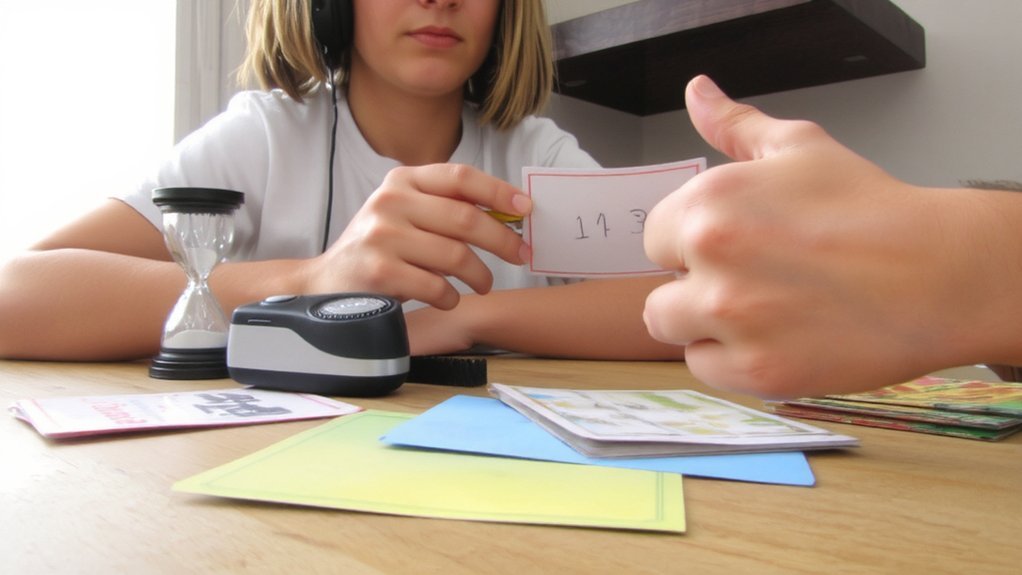You can learn a new language faster than you think if you use focused, consistent methods. Set clear, realistic goals and practice daily with high-frequency vocabulary, short SRS reviews, and regular speaking sessions. Switch your devices to the target language and get native feedback. Keep going to find which steps actually speed your progress.
Understand the Critical Period and Set Realistic Goals

Although you can’t rewind your childhood, knowing about the critical period helps you set realistic language goals. You won’t magically gain native-like pronunciation after puberty, but you can reach high proficiency through deliberate practice.
Focus on achievable milestones: conversational fluency, comfortable comprehension, and specific professional vocabulary. Prioritize pronunciation early if native-like accent matters, but accept that subtle phonetic differences may persist.
Measure progress with concrete tests: hold a five-minute conversation, understand a podcast episode, or write an email without major errors. Break large aims into monthly targets and adjust based on feedback.
Accepting biological limits frees you to plan efficiently, concentrate on communicative competence, and celebrate measurable gains rather than impossible perfection. Set timelines based on realistic benchmarks and keep tweaking your approach regularly.
Choose the Right Schedule and Intensity for Your Target Language

Accepting biological limits lets you focus on how much time and intensity you’ll actually commit.
Decide whether you’ll study daily or in concentrated blocks; daily short sessions beat sporadic marathon days for retention and momentum.
Aim for quality: 20–60 minutes of focused practice with clear goals trumps unfocused hours.
Mix active production, listening, and targeted review so sessions feel varied but purposeful.
Build a routine tied to existing habits — morning coffee, commute, or evening wind‑down — and protect those slots.
Track fatigue; if you’re burning out, reduce intensity or insert recovery days.
Increase load gradually as comfort grows.
Reassess monthly: if progress stalls, tighten focus or redistribute time rather than simply adding hours.
You’ll learn faster when consistency beats occasional cramming and distraction daily.
Prioritize High‑Frequency Vocabulary and the Natural Grammar Sequence

Because most everyday speech uses a small set of words and predictable structures, prioritize high-frequency vocabulary and follow the language’s natural grammar sequence. Start with pronouns, common verbs, question words, connectors, and essential nouns — you’ll get communicative mileage fast.
Learn basic conjugations and sentence word order next; that lets you combine words without memorizing complex rules. Focus on patterns you hear in conversations and simple texts, not on rare exceptions.
Practice constructing short, meaningful sentences that reflect everyday needs: greetings, requests, directions, shopping. As you advance, expand by frequency lists and serial patterns (tenses, negation, relative clauses) in the order native learners acquire them.
This approach maximizes comprehension and usable fluency early. You’ll save time and speak more naturally in everyday situations, starting day one.
Use Structured Practice: Flashcards, Feedback, and Drills

When you want to lock in words and patterns, use spaced flashcards, targeted feedback, and short, focused drills.
Use an SRS app to replay vocabulary right before you forget it, keeping sessions to 10–20 minutes.
Put words in phrases, not isolated lists, so hookups to grammar form naturally.
Record yourself and compare pronunciations to native models; ask a tutor or language partner for immediate, specific corrections.
Turn mistakes into micro-lessons: note error type, make a drill, and repeat until automatic.
For grammar, do timed sentence transformations and error-spotting exercises that push retrieval under mild pressure.
Track progress with clear, tiny goals—daily new cards, weekly correction review—and cut practices that don’t yield measurable improvement.
Reuse corrected items frequently and celebrate small wins to stay motivated.
Create Immersion: Eliminate English and Seek Genuine Communication

After you’ve locked in vocabulary and patterns with flashcards and targeted drills, shift your environment toward the language itself: remove English prompts, set device and media language to your target, and force yourself to think and speak in it.
Immerse by redesigning daily habits: label items in your home, narrate actions aloud, and keep a short journal in the language.
Seek genuine exchange—meet native speakers for coffee, join conversation groups, or find a language partner who challenges you to respond naturally.
Prioritize comprehension and risk-taking over perfection; ask questions, request corrections, and mirror useful phrases.
Make realistic micro-goals—five minutes of uninterrupted speech, a lunch entirely in the language—and gradually increase exposure until the language becomes your default.
Celebrate small wins to sustain motivation daily.
Leverage Technology: Apps, Gamification, VR, and Online Platforms
How can you turn tech into deliberate language practice? Use apps for focused drills: spaced-repetition flashcards for vocabulary, grammar trainers for targeted patterns, and listening modules to sharpen comprehension.
Choose gamified programs that set clear goals, reward consistency, and break study into short, repeatable sessions. Try VR and simulated environments to build contextual awareness and shadow native speech models, but avoid passive scrolling.
Use analytics and streaks to monitor weak areas, then schedule micro-reviews. Combine multimodal input—texts, captions, slow audio, and annotated transcripts—to reinforce form and meaning.
Select platforms with adaptive algorithms that adjust difficulty as you improve. Finally, automate reminders and batch short sessions so tech nudges deliberate, measurable progress without wasting time. Prioritize tools that respect your schedule, data, and privacy settings.
Build Speaking Fluency Through Interactive, Authentic Tasks
Practicing speaking with interactive, authentic tasks forces you to process language in real time and build fluent routines: use role-plays, information-gap activities, interviews, short presentations, and real conversations to prioritize meaning over perfect grammar.
Choose tasks that mirror goals — ordering food, negotiating, storytelling — and repeat them with varied partners and contexts.
Focus on conveying messages, using repair strategies, and recycling useful chunks and phrases.
Record or get immediate corrective cues when accuracy blocks communication, but don’t let correction interrupt flow.
Push to expand responses by asking for clarification, summarizing, and adding details.
Gradually increase speed and complexity, including unfamiliar topics, so your automatic responses grow, letting fluency emerge from purposeful, socially grounded practice.
Make mistakes; they’re evidence you’re actively learning every session.
Monitor Progress, Sustain Motivation, and Adapt Your Approach
When you track progress regularly, you’ll see what’s working and where to adjust your practice.
Set measurable short-term goals—minutes practiced, words learned, conversation turns—and review them weekly.
Use quick metrics: flashcard accuracy, speaking fluency, comprehension percent in podcasts.
Log wins and setbacks; celebrate small victories to keep momentum.
If boredom or plateau appears, change input type, increase challenge, or swap routine intensity.
Ask for feedback from tutors or native partners and revise targets based on their notes.
Rotate skills focus so reading, listening, speaking, and writing improve together.
Keep resources fresh and time-boxed to avoid burnout.
Stay accountable with a study partner or public commitments, and iterate your plan every month.
Adjust methods based on data and feelings, and you’ll progress more consistently.
Conclusion
You won’t become fluent overnight, but if you set realistic goals, prioritize high‑frequency words and natural grammar, and practice daily with focused SRS, drills, and real conversations, you’ll make fast, steady progress. Immerse yourself, use tech and tutors for feedback, and build speaking through authentic tasks. Track measurable milestones, adjust intensity monthly, and celebrate wins to stay motivated. Stick with it, and you’ll reach usable fluency far sooner than you think, so keep going daily.